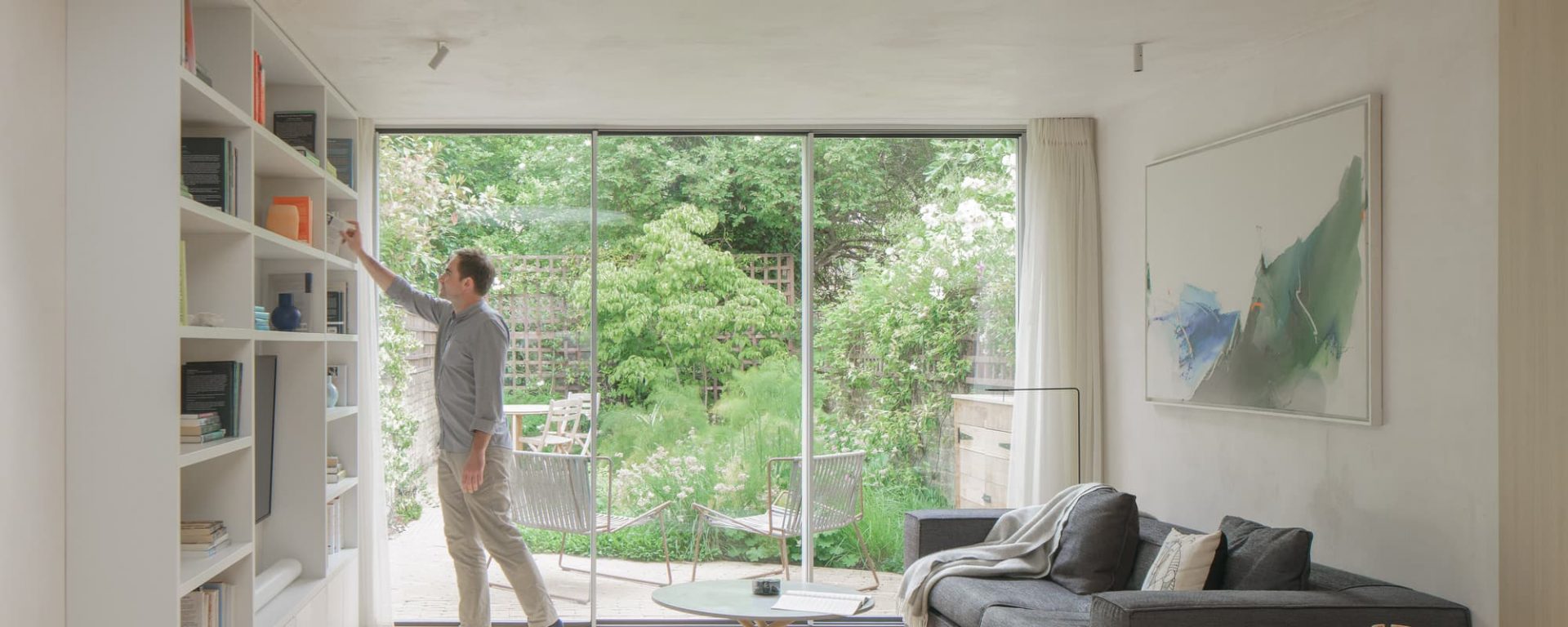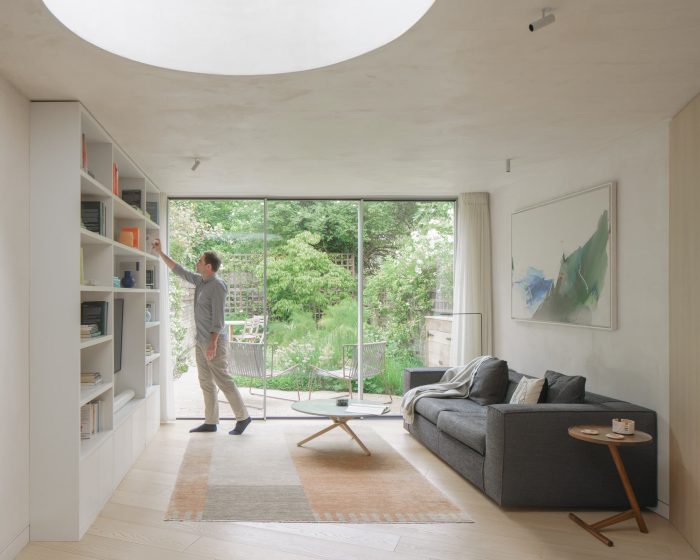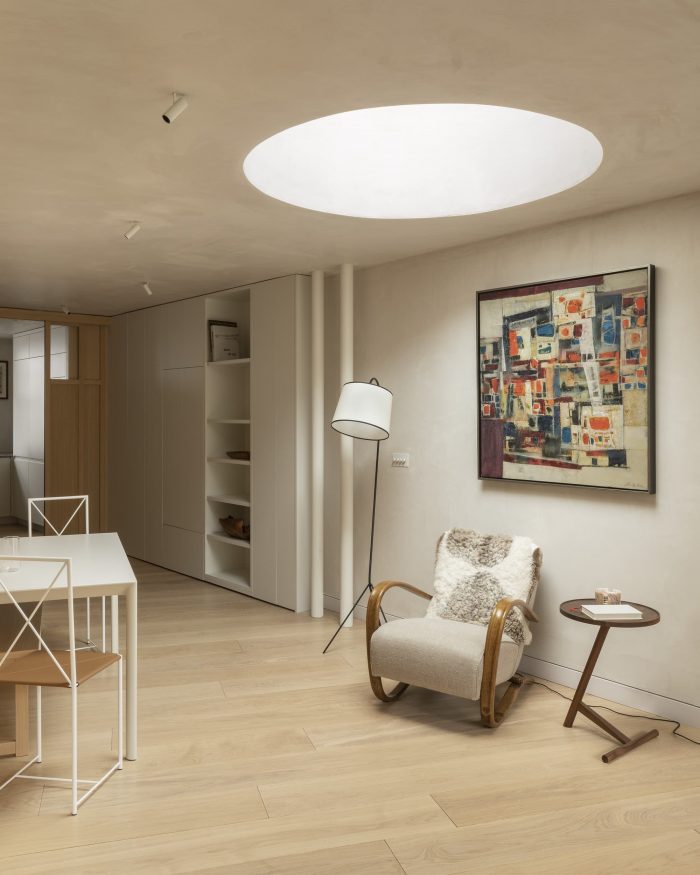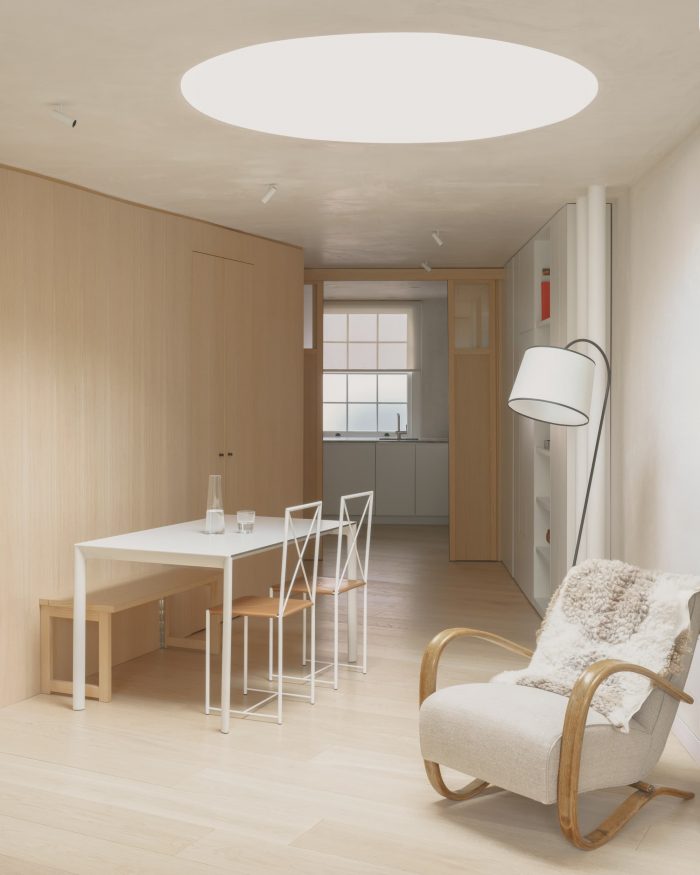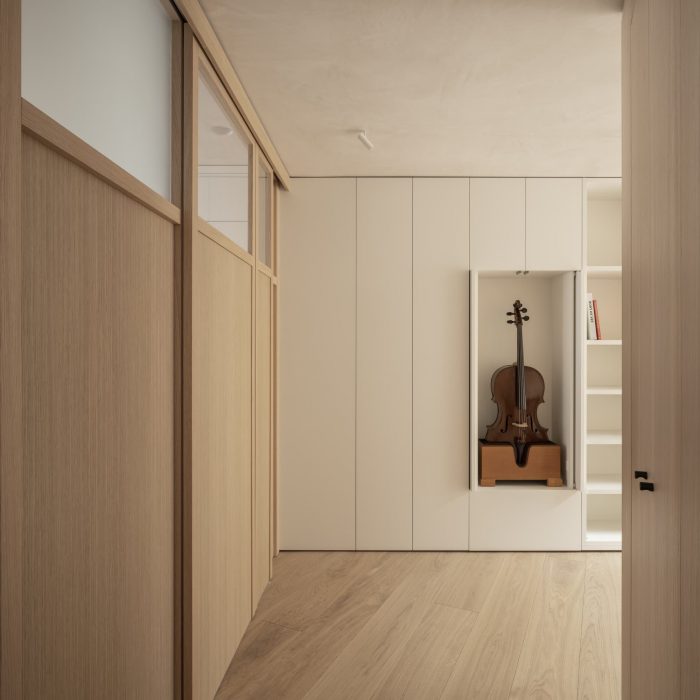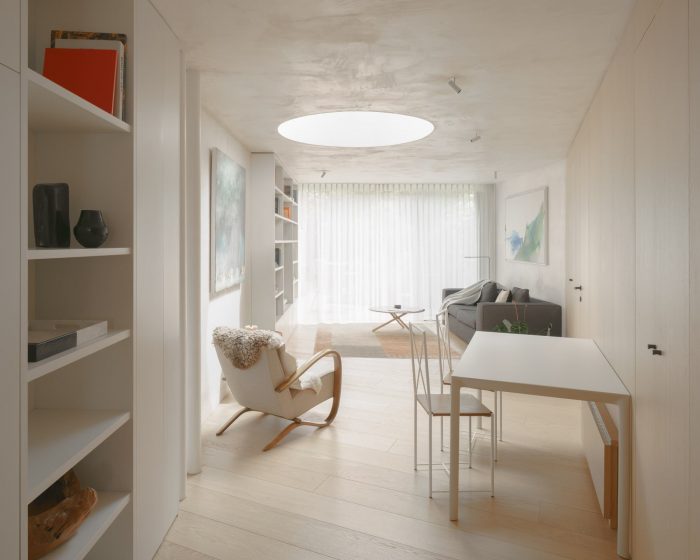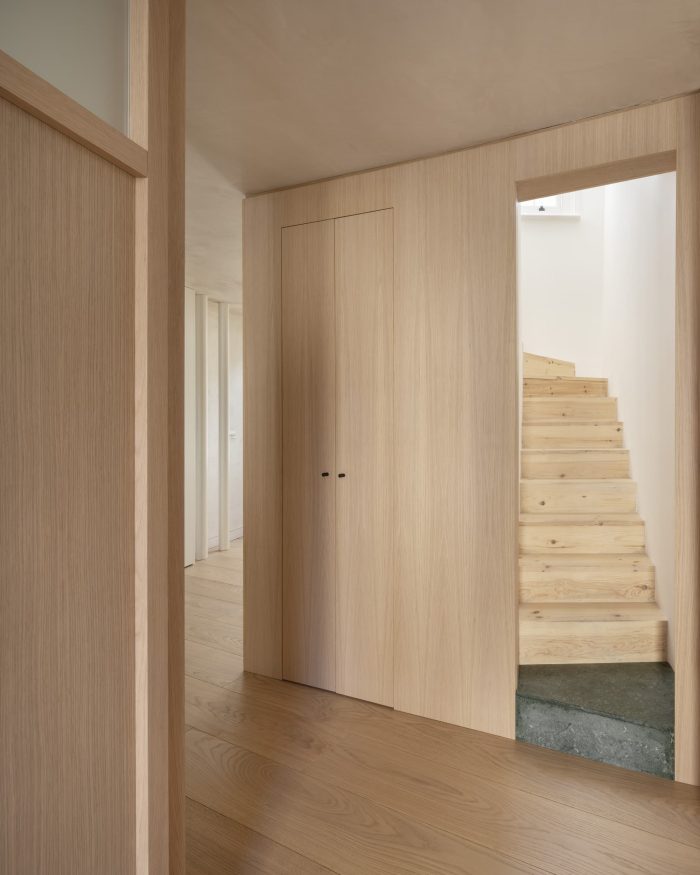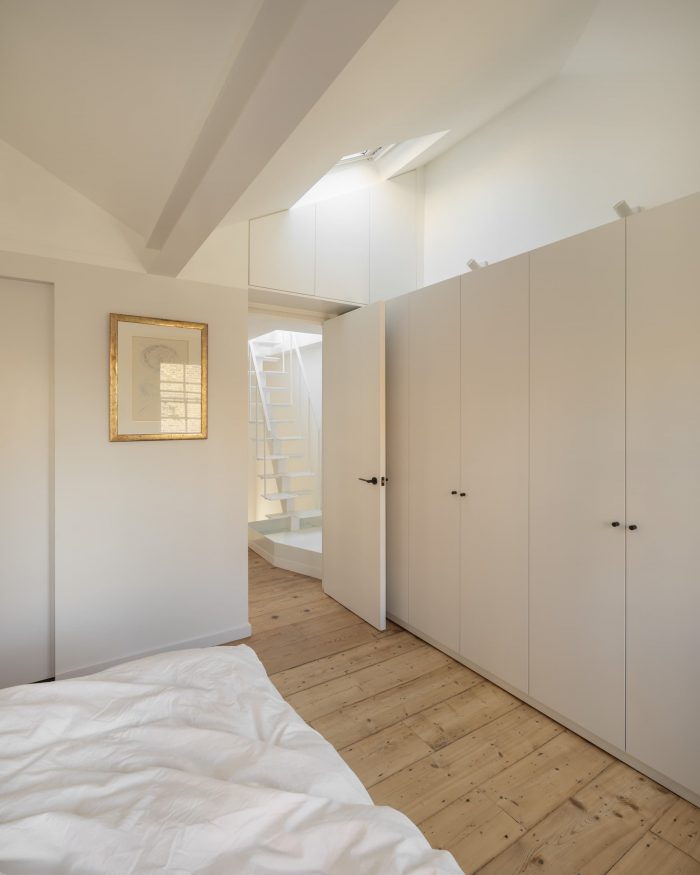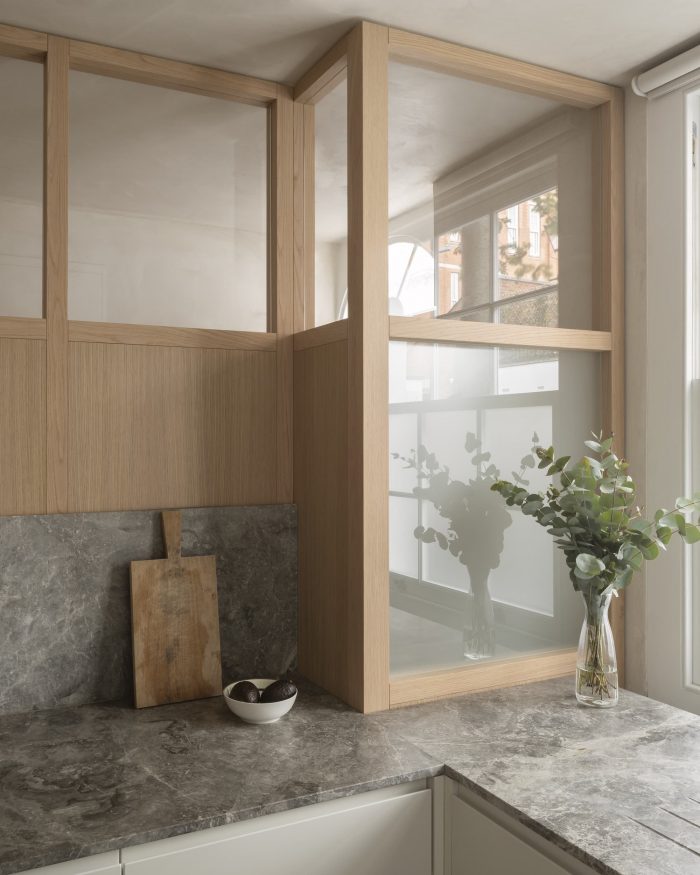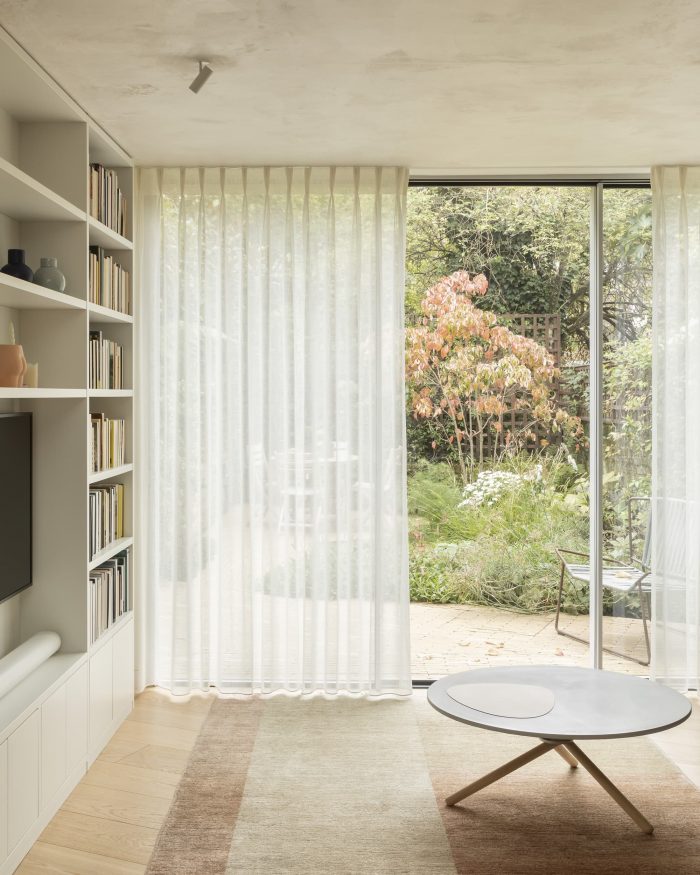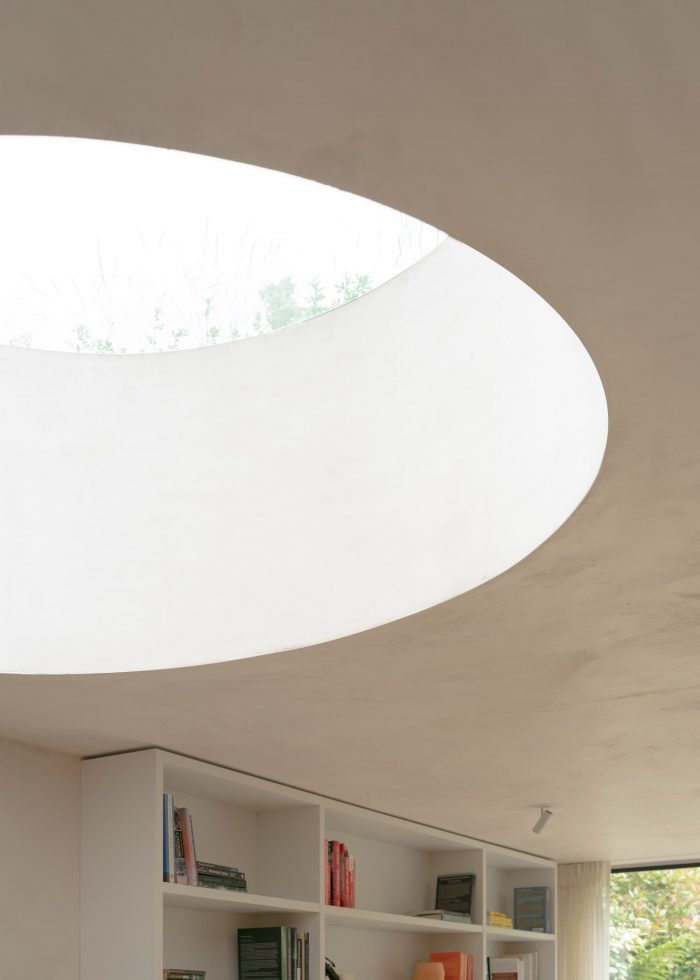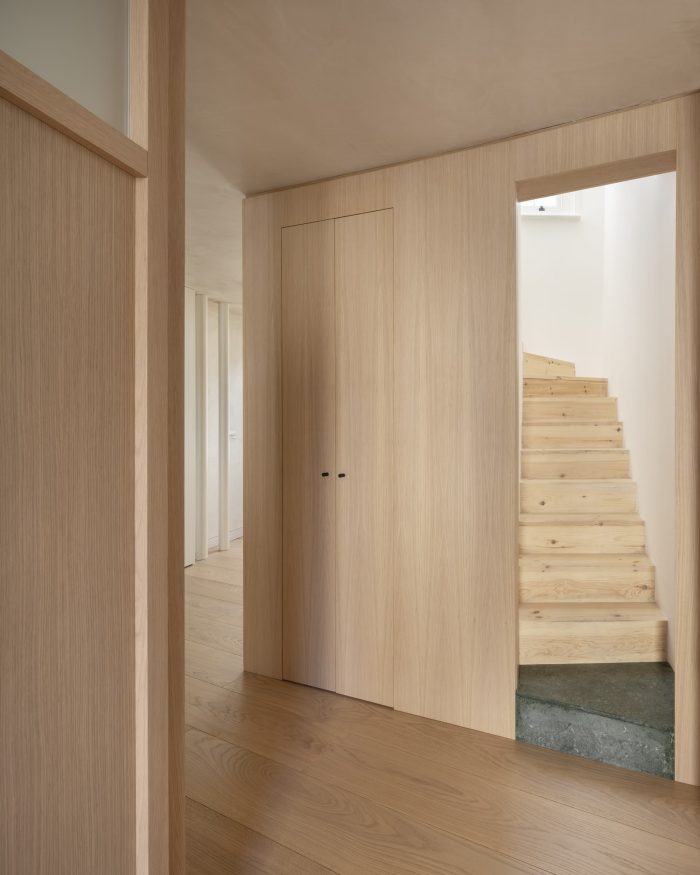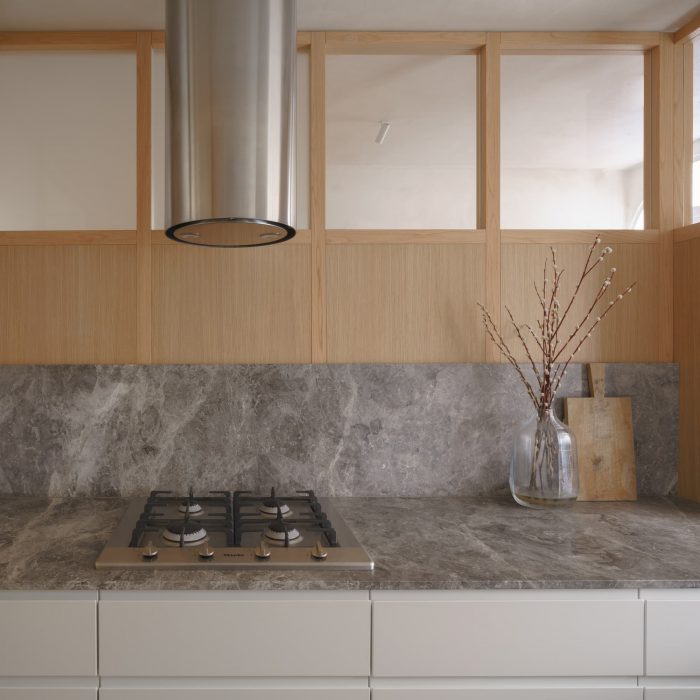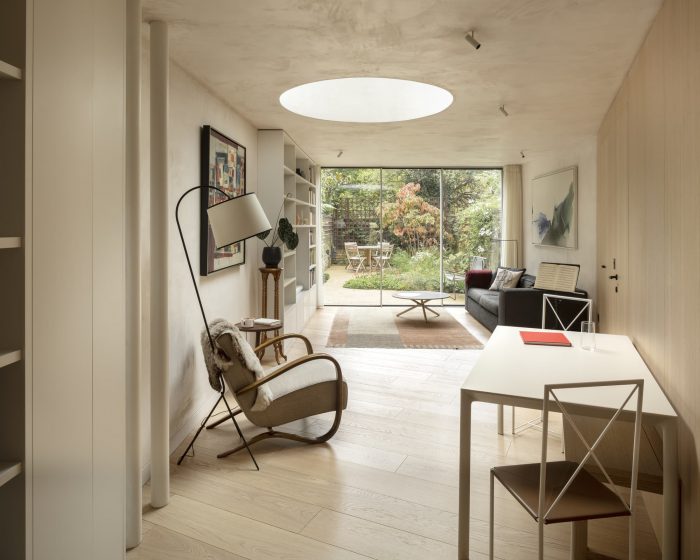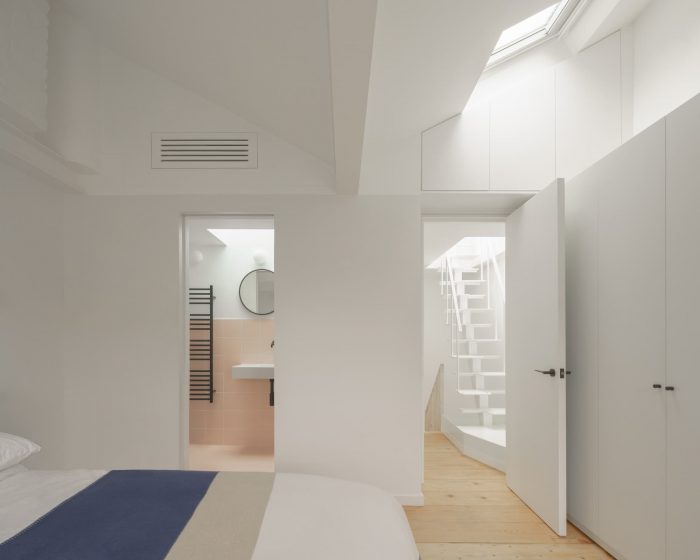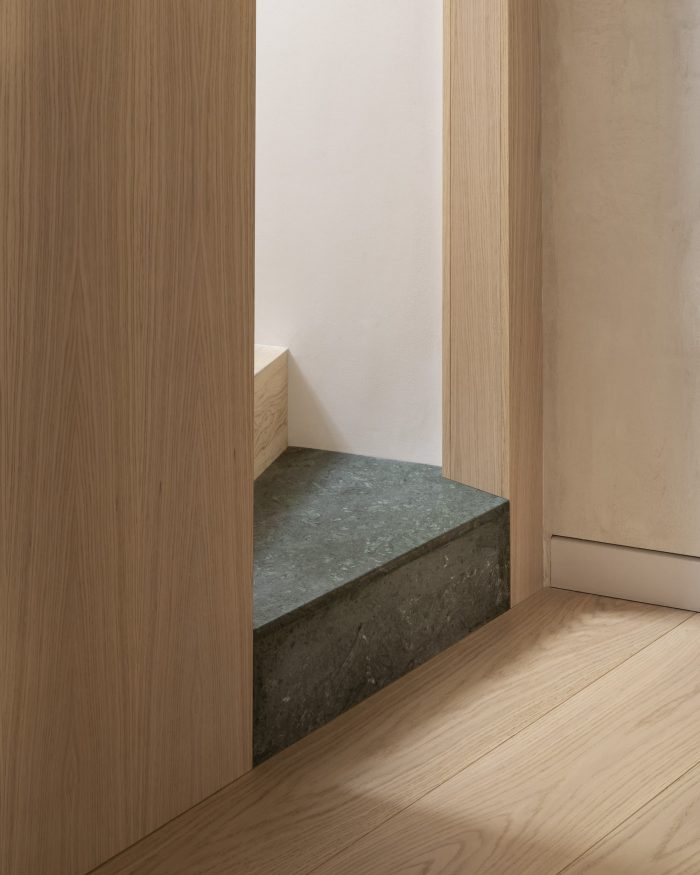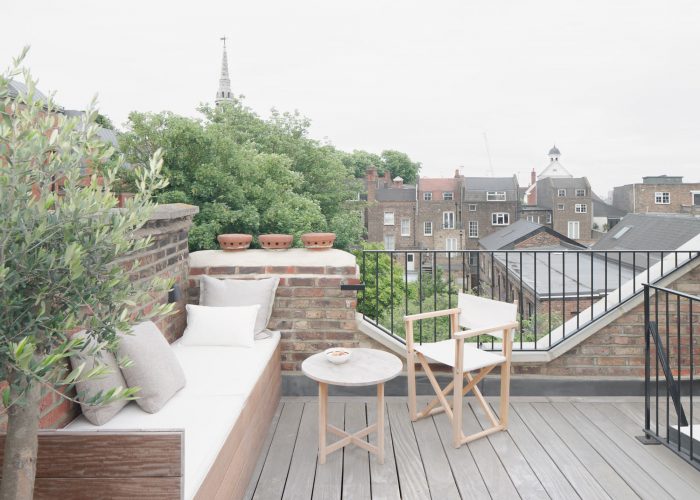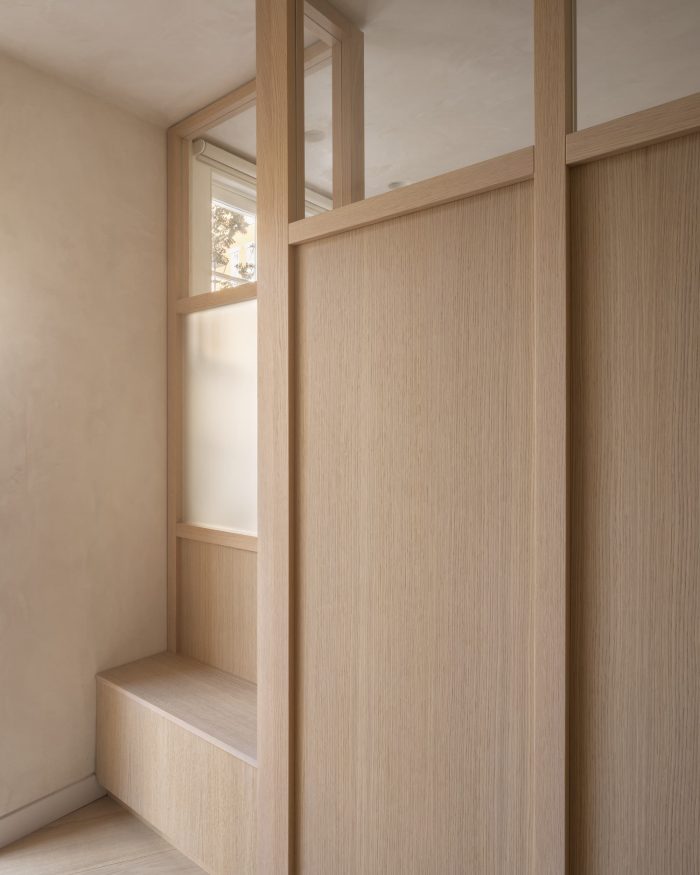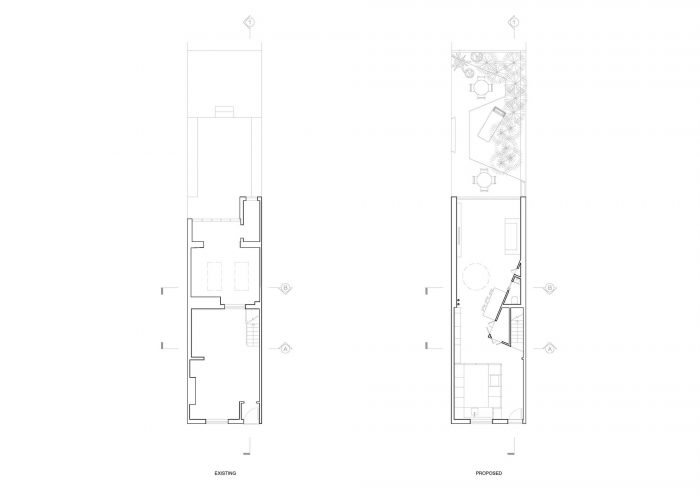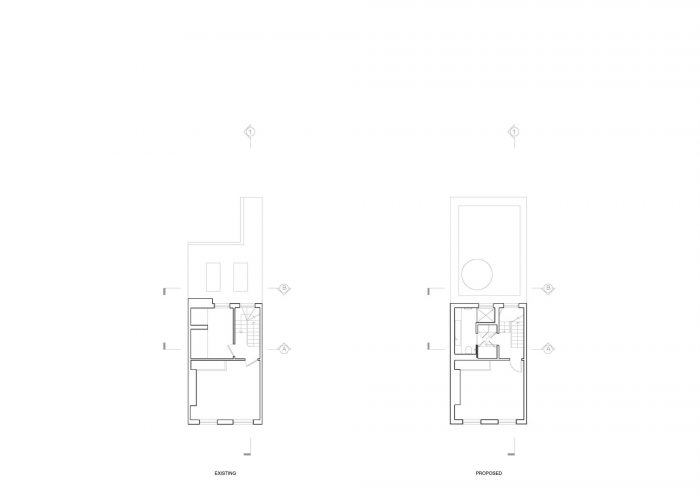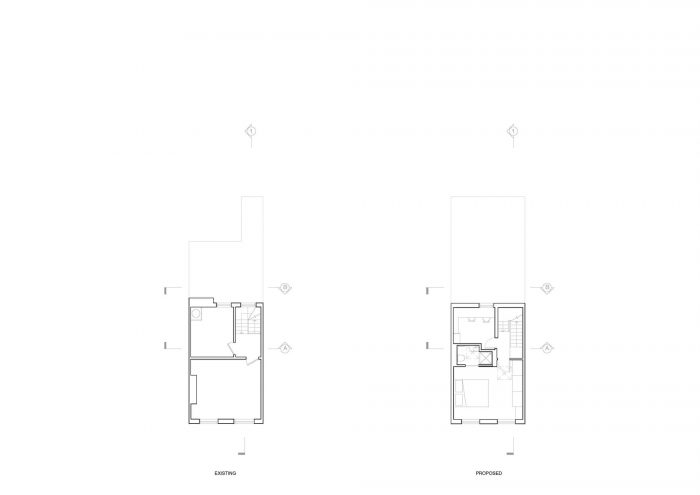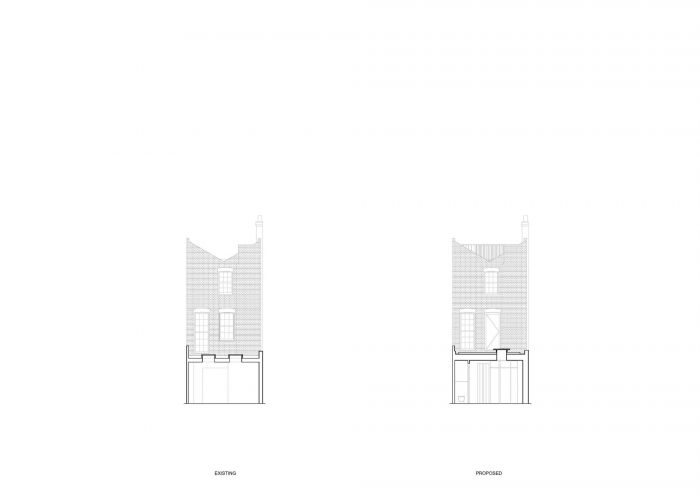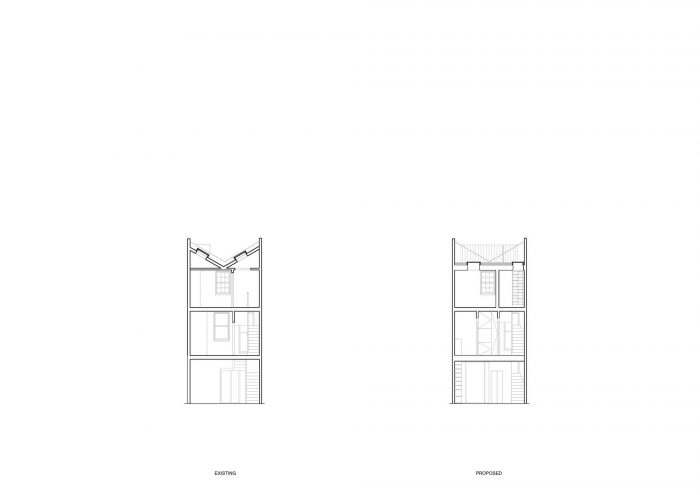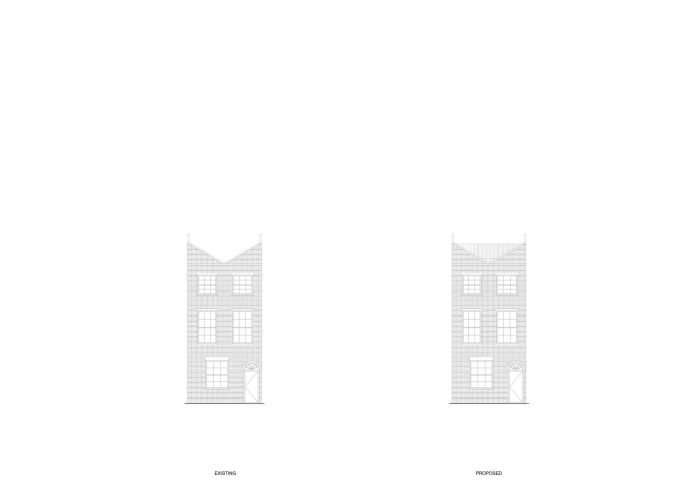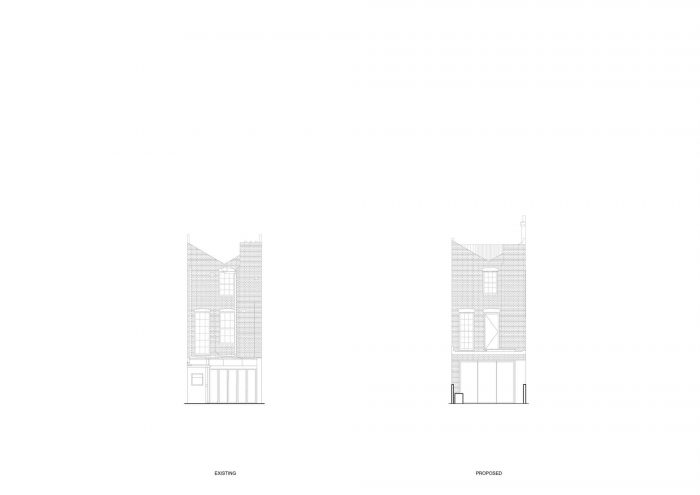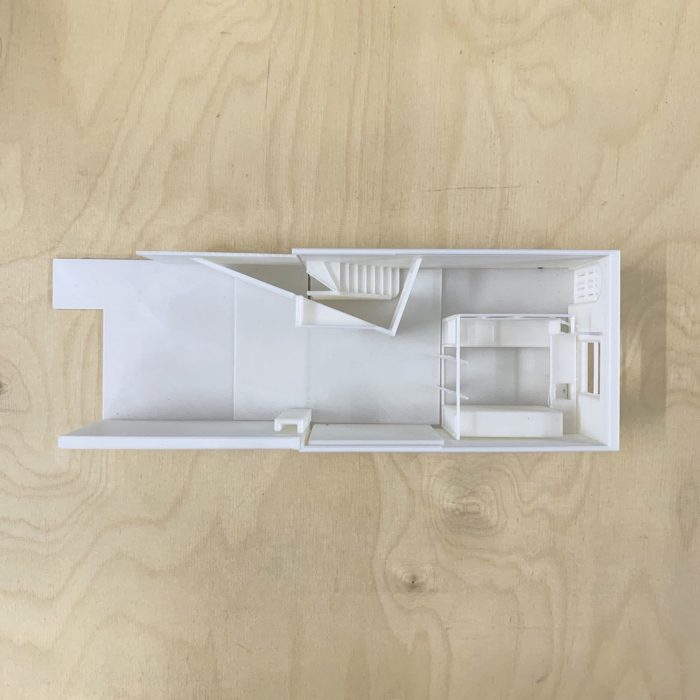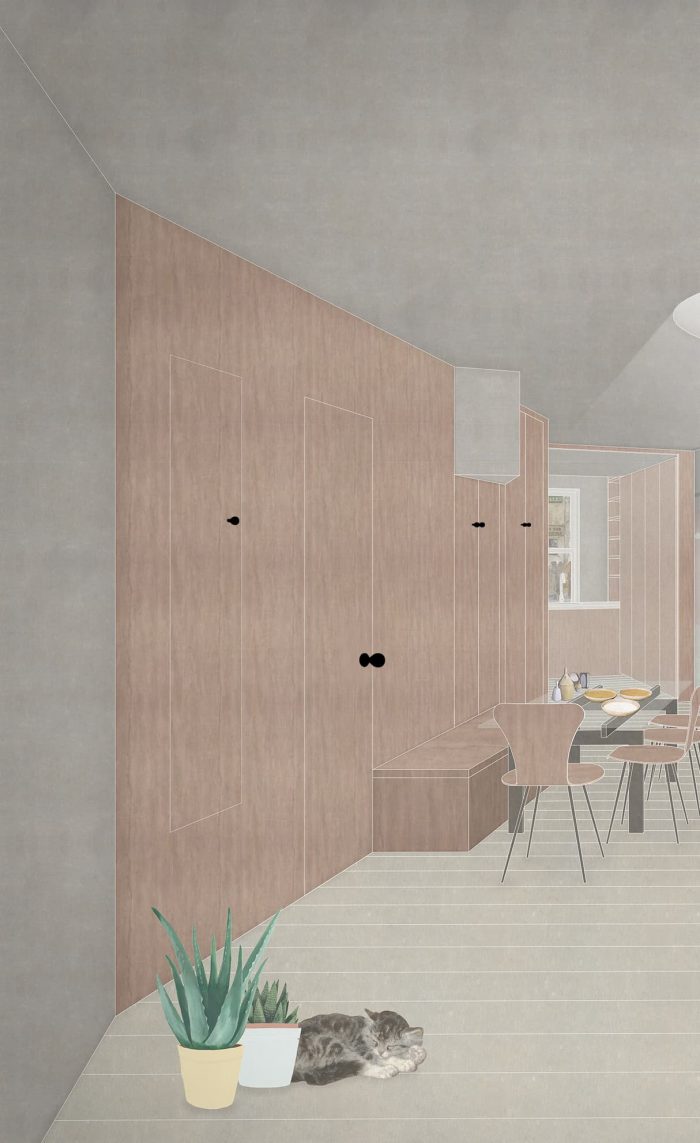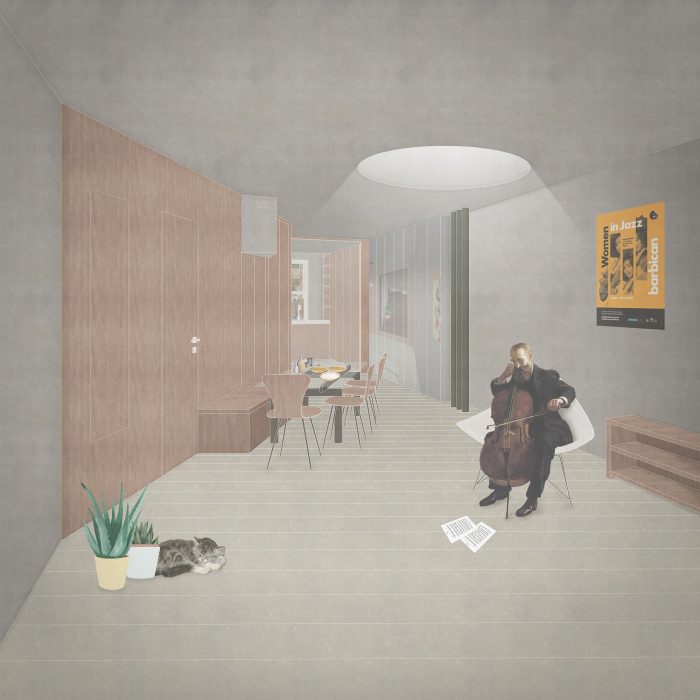客户简介。我们的客户希望将一栋传统的伦敦小联排别墅改造成一个现代的、明亮的、宽敞的住宅,并有足够的空间供一个四重奏乐队排练。新的室内空间需要与花园有直接的关系,并保护其不受前窗外人行道的影响。屋顶露台将提供一个非常规的、独特的第二开放空间。
Client Brief: Our clients wanted to sensitively transform a small, traditional London townhouse into a contemporary, light, and spacious home, with enough space for a quartet to rehearse. The new interior space needed to have a direct relationship with the garden and be protected from the pavement immediately outside the front window. A roof terrace would provide an unconventional and unique second open space.
房子还需要配备现代的舒适设施,一个底层厕所,一个洗衣柜,一个新的主卧室套间,一个在家工作的办公室,以及大量的存储空间。有趣的是,只要有足够的排练空间,客户并不太关心是否有餐桌。我们的部分工作是创造一个灵活的布局,可以满足所有的要求,包括餐桌。
The house also needed to be equipped with contemporary comforts, a ground floor WC, a laundry cabinet, a new ensuite to the master bedroom, an office to work from home, and plenty of storage. Interestingly, the client was not too concerned about having a dining table as long as there was enough rehearsal space. Part of our work has been to create a flexible layout that can accommodate all the requirements, including the dining table.
设计说明。原来的三层联排别墅建于1850年左右,是伦敦北部一个填充式露台开发的一部分。现在的业主想把房子改造成急需的大规模翻新的一部分(砖和木头结构需要审查),以创造一个明亮、宽敞、现代的家,在里面生活和玩音乐。我们在底层增加了一个宽敞的单层后部扩建,在顶层增加了一个屋顶露台,取代了房子的旧加建部分(可追溯到20世纪70年代和90年代)。
Design Statement: The original three-story townhouse was built around 1850 as part of an infill terrace development in north London. The current owner wanted to transform the house as part of a much-needed extensive refurbishment (brick and timber structures needed reviewing) to create a bright, spacious, contemporary home to live in and play music in. We added a generous single-story ground-floor rear extension and a roof terrace on the top floor, replacing old additions to the house (dating to the 1970s and 1990s.)
一楼的平面图是一个大小不一的断面,宽大的入口大厅有机地流向其他空间;厨房在房子的前面,用半透明的木头和一个带滑动门的玻璃盒子围起来。私人的开放式起居空间向后花园开放。内部布局是对空间连续性的反映,是对压缩和扩展的研究,也是对灵活性的练习。一楼的宜居空间由长方形的占地面积和包围所有服务区和楼梯的三角形棱柱之间的交叉点来勾勒。
The ground floor plan is one sizeable broken plan, with a wide entrance hall organically flowing into the rest of the space; the kitchen is at the front of the house, enclosed in semi-transparent wood and a glass box with sliding doors. The private open-plan living space is open to the rear garden. The internal layout is a reflection on space continuity, a study in compression and expansion, and an exercise in flexibility. The livable space on the ground floor is outlined by the intersection between the rectangular footprint and a triangular prism enclosing all the service areas and the stairs.
由此产生的空间是开放的:没有走廊或门,只有一个半包围厨房的盒子和一个圆形天窗。三角形的交叉点产生的角度创造了一些隐私空间:从入口处看不到花园,人们必须到达房子的中部才能体会到扩展的深度和空间的开放性。旋转的角度引导着底层周围的自由流动,并舒适地拥抱布局的中间部分,创造出一个声学的、有机的内部空间。
The resulting space is open to the flow: there are no corridors or doors, just a box semi-enclosing the kitchen and a circular skylight. The angles generated by the intersection of the triangle create pockets of privacy: the garden is not visible from the entrance, and one must reach the middle of the house before appreciating the depth of the extension and the openness of the space. The rotated angles guide the free flow around the ground floor and comfortably embrace the middle of the layout to create an acoustic, organic interior.
一楼布局的中间部分吸收了当代音乐家的房子所需的所有灵活性:存储空间也可以作为厕所、餐桌长椅和酒吧。餐桌可以移到侧面,以便为排练腾出空间。一个圆形的屋顶灯极大地标示了这一区域,将自然光引入室内深处,软化了房子的形状和阴影。栖息在花园和绿色屋顶上的植物通过后方的玻璃门和屋顶灯向外看。
The middle of the ground floor layout absorbs all the flexibility required in a contemporary house for a musician: the storage volume also works as WC, dining table bench, and Bar. The dining table can be moved to the side to make space for rehearsals. A circular roof light marks this area dramatically, drawing natural daylight deep within and softening the house’s shapes and shadows. Plants inhabiting the garden and the green roof peer through the rear glass doors and the roof light.
屋顶平台通过二楼的定制钢制楼梯和定制的电动屋顶舱口进入;楼梯的底部作为一个花盆,内部水龙头将作为一个灌溉系统。过去的痕迹在整个房子里都很明显;我们注意加强而不是失去原有建筑的任何特征。在顶层的主卧室里,原来的砖烟囱被暴露出来,给空间带来了质感,并为房间增加了一个独特的特征。
The roof terrace is accessed through a bespoke steel staircase on the second floor and a bespoke electric roof hatch; the base of the stair acts as a planter, and an interior tap will serve as an irrigation system. Traces of the past are evident throughout the house; we were mindful to enhance rather than lose any of the characters of the original architecture. In the master bedroom, on the top floor, the original brick chimney is left exposed, bringing texture to the space and adding a unique feature to the room.
材料的色调有助于室内的宁静和声学的舒适:浅色的橡木地板、配套的细木工制品和粗糙的石灰灰泥是底层的主要元素。石头细节(主要是绿色大理石)散布在房子周围,以强调门槛区域。后立面采用了再生砖,并有一个石制的立柱(设计参考了Tony Fretton Architects的Molenplein Houses)。
The material palette contributes to the tranquillity and the acoustic comfort of the interior: light oak floors, matching joinery, and rough lime plaster are the dominant elements on the ground floor. Stone details (mostly green marble) are scattered around the house to underline threshold areas. The rear elevation is clad in reclaimed bricks with a stone upright (a design reference to Tony Fretton Architects’ Molenplein Houses).
屋顶平台用铅和IPA装饰。可持续发展战略。底层和屋顶已被重建,以提供足够的绝缘。所有没有二级玻璃的窗户都被替换成了双层玻璃单元。扩建部分覆盖了野花绿化屋顶,提高了生物多样性,减少了当地的洪水风险。
The roof terrace is finished in lead and IPA decking. Sustainability strategy: The ground floor and roof have been rebuilt to provide adequate insulation. All the windows that did not have secondary glazing have been replaced with double-glazed units. The extension is covered with a wildflower green roof that enhances biodiversity and reduces the risk of local flooding.
Architects: Unagru Architecture Urbanism
Year : 2021
Photographs :Building Narratives, Stale Eriksen
City:LONDON
Country:UNITED KINGDOM

